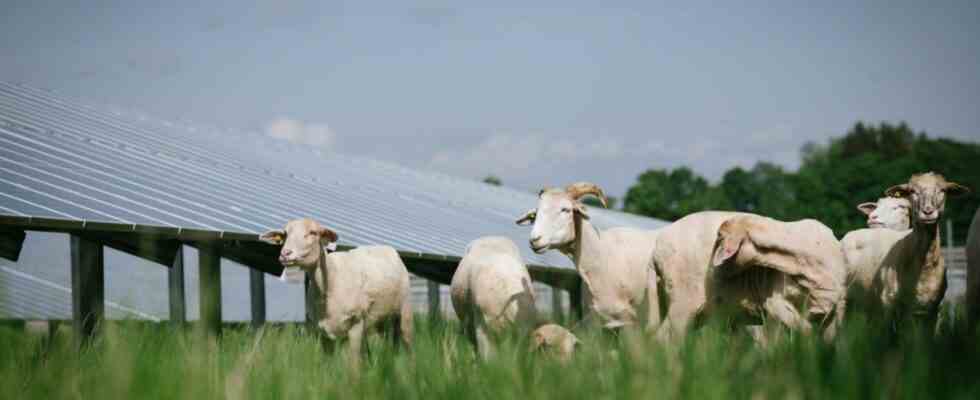The municipality of Brunnthal wants to become more independent in terms of energy technology and is negotiating with three investors about open-space photovoltaic systems. Which company can put its panels where is still being discussed in camera. However, the municipal council passed a list of criteria on Wednesday by a majority, which stipulates minimum area sizes, distances to forest and buildings and necessary greenery.
The reason for the list of criteria are three current inquiries for two areas in Brunnthal itself and one in Kirchstockach, two public participation projects on 4.5 and three hectares and a private project. The latter is to be 5.1 hectares in size and could supply a good 1,800 households with 3,500 kilowatt hours of electricity per year. Two other requests were dismissed.
Agricultural areas have to be sacrificed for photovoltaic systems. Mayor Stefan Kern (CSU) said in the municipal council that the question was how much to bring in and whether it was fillet pieces or sour meadows. With the catalog of criteria he wants to ensure “reasonable urban development within 20 years” and simplify the procedures. The final resolution of a minimum size of 1.5 hectares for photovoltaic areas was controversial in the council. Hilde Miner from the Greens warned against limiting yourself and missing good opportunities. As a farmer, Martin Werntshofner (non-partisan voter group) expressed the fear that agricultural land could be lost or rents could increase. According to the decision, several applications can be bundled, there is no upper limit. Finally, the municipal council decides on each project in the building management process, in which the public is also involved, which visibly calmed the members of the committee.
They discussed in detail the greening of the solar systems. At a distance of two meters inside the site boundary, it must be five meters wide and have an adjacent maintenance path. The hedge or planting should also prevent the polished surfaces of the panels from glaring. The distance to forests – now at least 20 meters – and to buildings was important to the municipal councils. A distance of 50 meters plus a further 50 meters of restriction area must be maintained to residential buildings. Exceptions to this are splintered buildings and commercial areas.
Other forms of power generation are also being promoted – including wind power
What does that mean in concrete terms for the community’s energy needs? The three plants for which inquiries have been received would be twelve hectares in total. In order to generate the desired amount of electricity, 68 hectares would be needed for photovoltaics or four wind turbines, which only require around 1.6 hectares of installation space including access roads. For the time being, however, the approved catalog provides 45 hectares for open-space photovoltaic systems. That is around five percent of Brunnthal’s agricultural land, on which 58 percent of the total annual electricity requirement based on 2019 would be generated. However, the demand for electricity is now higher due to alternative forms of energy and e-mobility, emphasized Kern.
Power generation from biogas, geothermal energy, wood and other sources is still necessary, Kern emphasized. Farmers should install biogas systems, and citizens should install more photovoltaic and solar thermal panels on their roofs, he demanded. And – “that will hurt” – wind energy is also necessary. Community efforts are now under way. The construction of the first open-space photovoltaic systems in Brunnthal can be expected in spring 2024.

